The code below generates a red box in a SCNView. However, the edges are jagged along the top and bottom of the side/element facing you (as illustrated by the attachment). The goal is to render smoother edges similar to Minecraft boxes. Changing the camera position reduces the pixelation of certain edges, so is this a camera angle issue? If yes, is it possible to render boxes with smooth edges no matter the camera angle?
For instance setting the camera position to SCNVector3(x: 0.0, y: 0.0, z: 10.0) renders the box effectively in 2D and with crisp edges (second attachment).
let sceneView = SCNView(frame: self.view.frame)
self.view.addSubview(sceneView)
let scene = SCNScene()
sceneView.scene = scene
let camera = SCNCamera()
let cameraNode = SCNNode()
cameraNode.camera = camera
cameraNode.position = SCNVector3(x: -3.0, y: 0.0, z: 10.0)
let ambientLight = SCNLight()
ambientLight.type = SCNLightTypeAmbient
ambientLight.color = UIColor(red: 0.2, green: 0.2, blue: 0.2, alpha: 1.0)
cameraNode.light = ambientLight
let light = SCNLight()
light.type = SCNLightTypeOmni
let lightNode = SCNNode()
lightNode.light = light
lightNode.position = SCNVector3(x: 0, y: 20, z: 10)
let cubeGeometry = SCNBox(width: 3.0, height: 3.0, length: 3.0, chamferRadius: 0.0)
let cubeNode = SCNNode(geometry: cubeGeometry)
let planeGeometry = SCNPlane(width: 100.0, height: 100.0)
let planeNode = SCNNode(geometry: planeGeometry)
planeNode.eulerAngles = SCNVector3(x: GLKMathDegreesToRadians(-90), y: 0, z: 0)
planeNode.position = SCNVector3(x: 0, y: -0.5, z: 0)
let redMaterial = SCNMaterial()
redMaterial.diffuse.contents = UIColor.redColor()
cubeGeometry.materials = [redMaterial]
let greenMaterial = SCNMaterial()
greenMaterial.diffuse.contents = UIColor.greenColor()
planeGeometry.materials = [greenMaterial]
let constraint = SCNLookAtConstraint(target: cubeNode)
constraint.gimbalLockEnabled = true
cameraNode.constraints = [constraint]
lightNode.constraints = [constraint]
scene.rootNode.addChildNode(lightNode)
scene.rootNode.addChildNode(cameraNode)
scene.rootNode.addChildNode(cubeNode)
scene.rootNode.addChildNode(planeNode)

